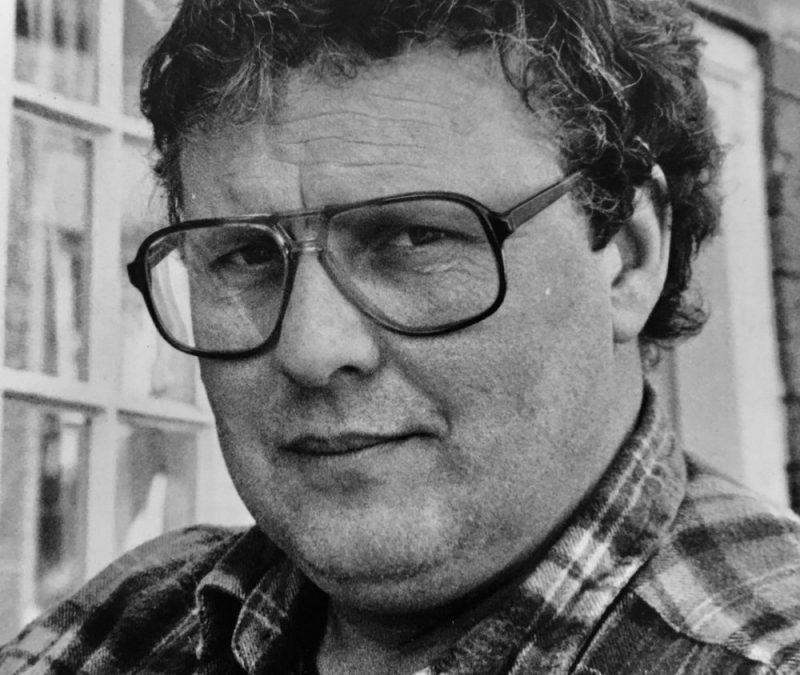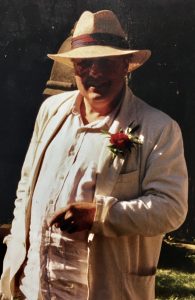
David Hunt NDD ATC Celebrated international landscape artist 1944 – 2024
David Hunt was born in Leek Staffordshire where he was to develop his fascination for the vast and varied moorland landscapes. Davids passion for the great outdoors inspired his original career choice to become a farmer. However his later educational triumphs would motivate a somewhat different profession destined to engage his talents for the rest of his life.
Leek is a market town which once supported a regular busy livestock auction. The town had also become famous for it’s many large towering cotton and silk mills, now used for many other purposes. The Mills became an attractive career opportunity for many girls leaving school and David’s mother engaged her talents working in a Mill close to their home. (Leek Mills) Whilst Davids relentless searching energy would be endowed from his mother, his practical skills and intense focus would be inherited from his craftsman father, who was a professional carpenter.
David passed his 11+ at Leek High School and because of the career opportunities it presented, Davids astute Mother persuaded him to abandon his intention to become a farmer in order to pursue an academic career. It was at that point that David realised that his talents in drawing and painting suggested an opportunity to combine both his love of the outdoors and his passion for painting.
Some years later David would return to Leek where he would fulfil that earlier realisation. Celebrated through the creation of countless paintings ‘En plein air’ which expressed the exhilarating swiftly shifting moods and weather of the wild and romantic moorlands on his doorstep. Those paintings that would eventually be exhibited across the world.
After his school education David was accepted at Leek School of Art. He took an “intermediate” exam in art foundation leading to an offer to continue study at Stafford College of Art & Crafts.
David Hunt & L.S. Lowery https://en.wikipedia.org/wiki/L._S._Lowry
In 1964 David was selected to visit L.S. Lowery in his private home (“The Elms” in Mottram, Manchester). The discussion during the college student visit was recorded on tape. David’s long exchange with L.S. Lowery on many issues regarding subject matter, composition and painting techniques can be clearly recognised.
At that time, the NDD Fine Art course also involved several years of intense study in life drawing, art history and a wide range of crafts. A successful final year examination was qualified with the generic title National Diploma in Design, later to become a far shorter specialised BA Hon’s degree course.
Having graduated with NDD, David went on to complete an ATC (Art Teachers Certificate) at Yorkshire’s Leeds University.
An interesting choice to complete his academic studies as Yorkshire was the origin of many other eminent UK artists. Henry Moore, Barbara Hepworth David Hockney and much later Damien Hurst being but a few.
In 1966 David married his first wife Caroline. They had four children. Daniel who is now fifty four, Rebecca who is fifty two, Katie is fifty one and Charlotte the youngest who is fifty.
He remains devoted to his children yet David’s happy early years in marriage to Caroline were to soon to come to an end.
Equipped with his academic credentials David won a teaching post at Trinity Fields School in Stafford, later to be renamed the ‘Sir Graham Balfour school’. Whilst teaching he also became involved in amateur dramatic’s and sport, namely rugby. It was a sport he remained involved with, both as a player mentor and instructor throughout his life. He was considered a formidable opponent and a devoted mentor!
Throughout his teaching career, David remained connected to his own art by simultaneously teaching evening life classes at Stafford College of Art. He was unaware that this was to lead to a complete career change which would edge him nearer to becoming an independent landscape artist back in his home town of Leek.
Serendipity seems to have been at work as those changes were soon to see him break away from teaching altogether. In 1974 he became the Curator of the Waterloo Gallery in the historical town of Burslem, Stoke on Trent. The post encourage him to paint as and when he wished. David arranged exchange exhibitions with noted London galleries such as the Morley Gallery. Apart from exhibitions for such famous artists as John Bratby and Maggie Hambling he also curated regular exhibitions of work by the Waterloo Gallery artists which included his own work.
In spite of being encouraged to paint for himself, he remained concerned for his own emotional needs and aspirations and he wrestled constantly with the loss of the teaching profession and the retirement security it promised.
To make matters worse he was simultaneously unsettled within his personal life and his marriage to Caroline finally came to an end. Having left the marital home he had added to what he already considered an uncertain future.
For some years after his paintings become intense, dark and tightly painted. (In 1997 David would marry Nichola who continues to share his life and passion for painting.)
He left the Waterloo Gallery in1976 when he was left a picture framing business which could also act as his painting studio. The time he spent painting was at a cost to his business income but he was able to justify it through the rapid increase in the quality gained in his work although the subject matter remained deep and dark for some time.

The self portrait above projects the overwhelming emotions he experienced during this period. In this painting those emotions are expressed through the depiction of an avalanche of hair in which his heart can be seen becoming crushed and overwhelmed. His heart is pouring blood which spills down his own image. The mountain beyond represents the impossible obstacles he needs to overcome. The entire composition is made up of angular planes falling to the right hand side of the canvas. These reflect a sense of instability and sense of life sliding away uncontrollably. The powerful black outlines (surrounding his self portrait) in the foreground suggest his sense of emotional imprisonment presenting a vision of himself in despair with nowhere to go.
Many of the portraits and compositions created during that period expressed the deep emotional allegorical narrative favoured by his namesake the Pre-Raphaelite William Holman Hunt . They necessarily served as a coping strategy, an outlet for his turmoil but never the less were crucial in inspiring his poetic energies and continued artistic development.
The dark experiences he endured throughout that period have been considered a major contribution to why he began producing the romantic but unpopulated landscapes for which he is now renown. Unpredictable human emotions were replaced with more predictable conditions of weather. Driving rain storms or soft gentle grasses waving gently in a breeze became his choice of subject. The absence of human kind would present no pressure or threat moreover landscapes presented predictable comfort through the harmony of colour and light that saturate such spectacular spaces. It would become evident through his paintings that life for the artist had also become harmonious.
His artistic watershed moment came when he began work on a painting of simple Chrysanthemums. He explained “It was a cathartic experience” for he had suddenly realised he had finally become liberated in his expression, composition, application and colour palette. He finally realised he was painting the way he had dreamed and it began a journey of emergence out of his dark period into light and air.
Thereafter his techniques became increasingly more open and fluent as his canvas engaged the light, air and spirit of the landscape he lived to capture. Just as ‘Claude Monet’ spent his life expressing the atmosphere of changing light in french landscapes, David continues that tradition expressed through his landscape paintings of the North Staffordshire Moorlands.
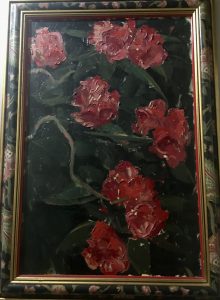
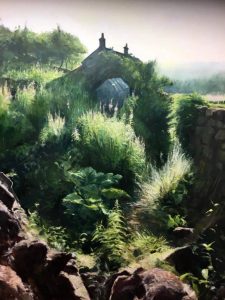
Jack Simcock https://en.wikipedia.org/wiki/Jack_Simcock
Extract of a letter to David (1995) – “Several of your paintings have kept crossing my mind since I saw them. ‘The Two Cows’ is certainly the gem of the show to me, as I told you. It’s not the trees or the cows, but the ‘air and the light’. This is something you do so well. Doubt if Constable could do it. He tried to paint reflected light, but, I don’t think there was often any real ‘atmosphere for breathing’ shame. It’s not an easy thing to paint thin air between the viewer and the landscape especially dust, insect and light laden air that you get in the country. It’s absent in most landscape paintings, but most absent where it should be most present. 20/5/1995
Artists Statement – David Hunt
“I always had the desire to paint. I never thought that I could make a living at it! The visual stimulation provided by the Staffordshire Moorlands landscapes and the strong feelings engendered by the changing climatic conditions, have always been with me. This strong motivation has, I believe, led to my continued development as a painter. Over the last few years the constant changes in mood and atmosphere that one sees along the coastal fringes of Devon and Dorset has been another important source of material for me. My desire is to strive to put into form the tremendously powerful reaction that I have to the light, the mood and the visual stimulation of those landscapes. So that people see my work and want to share in those feelings by wanting to own the pictures to enjoy in their own homes is, and always will be a tremendous inspiration for me.” (https://www.facebook.com/davidhuntgallery)
Davids message to the younger generation:
“Take it all on board. Find what really sparks your imagination and let it take you to where ever it lands. Be as diverse as possible and try not to over focus on just one thing as real joy often comes from totally unexpected directions”
David Hunt was interviewed in his Cheddleton studio – March 2023
Authors note: David was recently diagnosed with Amyloidosis, a rare disease that occurs when a protein called amyloid builds up in the organs. An amyloid buildup can stop the organs working properly. Organs that may be affected include the heart, kidneys, liver, spleen, nervous system and digestive tract. Although his condition is diagnosed as terminal David is resolved to continue painting. “Come what may, I still need to paint”
David continued to paint until he died peacefully on the 29th January 2024
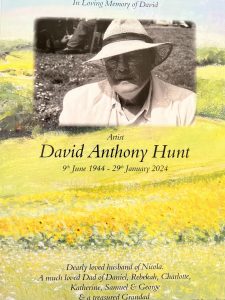
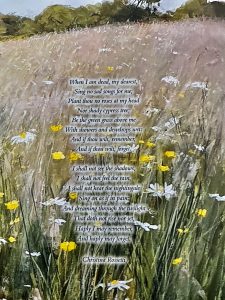
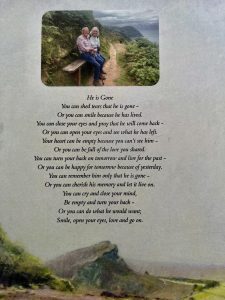
Past exhibitions and accolades include:
Waterloo Gallery in Burslem (Permanent exhibitions)
Blackheath Gallery in London
The Pastel Society in the Mall Gallery.
The Pastel Society’s Tom Rise Award
The Stafford County Open in 1994
Three Counties Open. Keele University in 1998 and 2008.
The Derbyshire Open 2000.
The Derbyshire Open 2006 Awarded “Most Popular Pictures in the Show”
The Staffordshire Open Studios preview exhibition at Lichfield Cathedral.
Won “Friends of the Gallery” “Stoke Open” Hanley Museum, 2008
Mast Cove, Maine USA – Landscape exhibition
Boothby Harbour, Maine. USA – Landscape exhibition
Private Collections – Worldwide
Davids favourite music; Mahler’s Second Symphony

